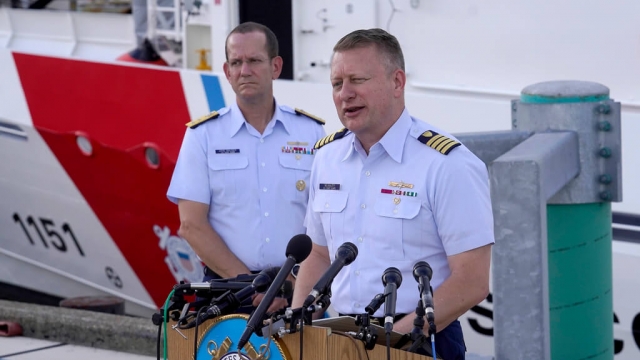Another tragic ending now sits at the bottom of the North Atlantic Ocean floor, joining the infamous shipwreck that sparked the voyage.
The Titan, imploded after it disappeared on Sunday en route to see the wreckage of the Titanic, which sits more than 12,000 feet deep in the North Atlantic.
The Polar Prince, the submersible’s support vessel, returned to port in Newfoundland, Canada, on Saturday after pieces of the submersible were found on the ocean floor earlier this week.
Authorities from several nations are now investigating the cause of the fatal implosion.
The U.S. National Transportation Safety Board announced Friday that it will assist the Coast Guard in investigating the incident.
"The U.S. Coast Guard has declared the loss of the Titan submersible to be a major marine casualty and will lead the investigation. The NTSB has joined the investigation and will contribute to their efforts," the NTSB said.
And on Sunday, officials stated that they will also convene a Marine Board of Investigation, which is the highest level of investigation conducted by the Coast Guard.
Meanwhile, the Transportation Safety Board of Canada launched an investigationinto the Polar Prince, which had 17 crew members and 24 others on board during the Titan’s voyage.
"This morning TSB investigators boarded the Polar Prince to examine and document the vessel to collect information from the vessel's voyage data recorder and other vessel systems that contain useful information. We have also begun conducting interviews with people aboard the vessel," said Kathy Fox, Chair of the Transportation Safety Board of Canada.
With the five passengers aboard the Titan being not only from the U.S. but also from England, Pakistan, and France, collaborative efforts have been initiated between U.S. and Canadian investigators, alongside the French Marine Casualties Investigation Board and the United Kingdom Marine Accident Investigation Branch, as confirmed by the Coast Guard.
SEE MORE: Father and son say red flags made them back out of doomed Titanic trip
Richard Stockton Rush III, the CEO of OceanGate Expeditions, founded the private diving company based out of Washington in 2009, alongside Guillermo Sohnlein, with a goal to make deep-sea exploration accessible.
All five passengers on board are presumed dead, including Rush, who controlled the vessel using what looked like a video game controller.
The sub was making its third voyage to the Titanic, which hit an iceberg and sank in 1912.
OceanGate started bringing people, described as active participants seen as crew members, to the Titanic in 2021 as part of its plan to document the deterioration of the wreckage.
With a background in aerospace and technology, Rush, who once said in an interview, "If you just want to be safe, don’t get out of bed," is described as a visionary.
"He was a talented engineer. He was a very intelligent person who was a passionate explorer," said Sohnlein, OceanGate’s co-founder.
Sohnlein, who left the company in 2013, says he spoke to Rush weeks before the tragic expedition.
"He was very well aware of the risks of operating at these deep depths, and he was very committed to safety," said Sohnlein. "He was always willing to listen to other people's opinions and evaluate them, and if you could convince him, he was willing to change his mind, which is fairly rare in this kind of field."
The vessel’s safety is in question, as former passengers have come out and said they felt unsafe on board the Titan.
"No, it was not safe," said former Titan passenger Arthur Loibl. "Everybody was nervous. Could we reach the bottom, or have we returned because some dives before they got problems with the battery systems by 1,600 meters, they have to go back?"
Industry leaders have also voiced safety concerns, telling the company that Titan needed more rigorous testing.
There are only so many vessels in the world that can travel to extremely high depths, all of which are certified, unlike the Titan.
Rush has defended the safety of his submersible in past interviews but said there’s always a risk.
The investigation carried out by the U.S. will serve the purpose of not only determining the cause of the accident but also assessing the requirement for new laws or regulations to avert future incidents. Additionally, it will aid in determining whether prosecutors should pursue civil or criminal sanctions, as deemed necessary.
Trending stories at Scrippsnews.com



